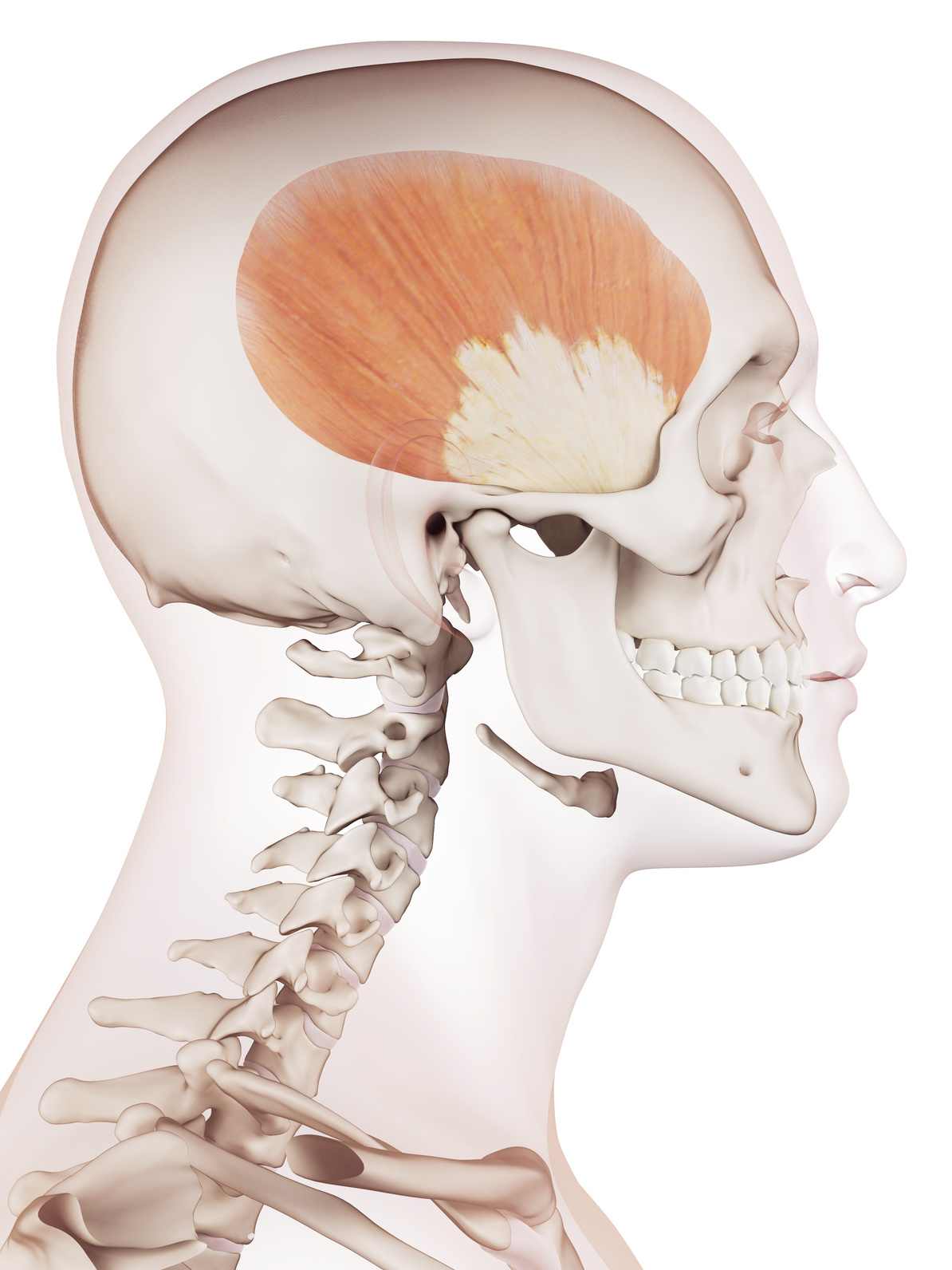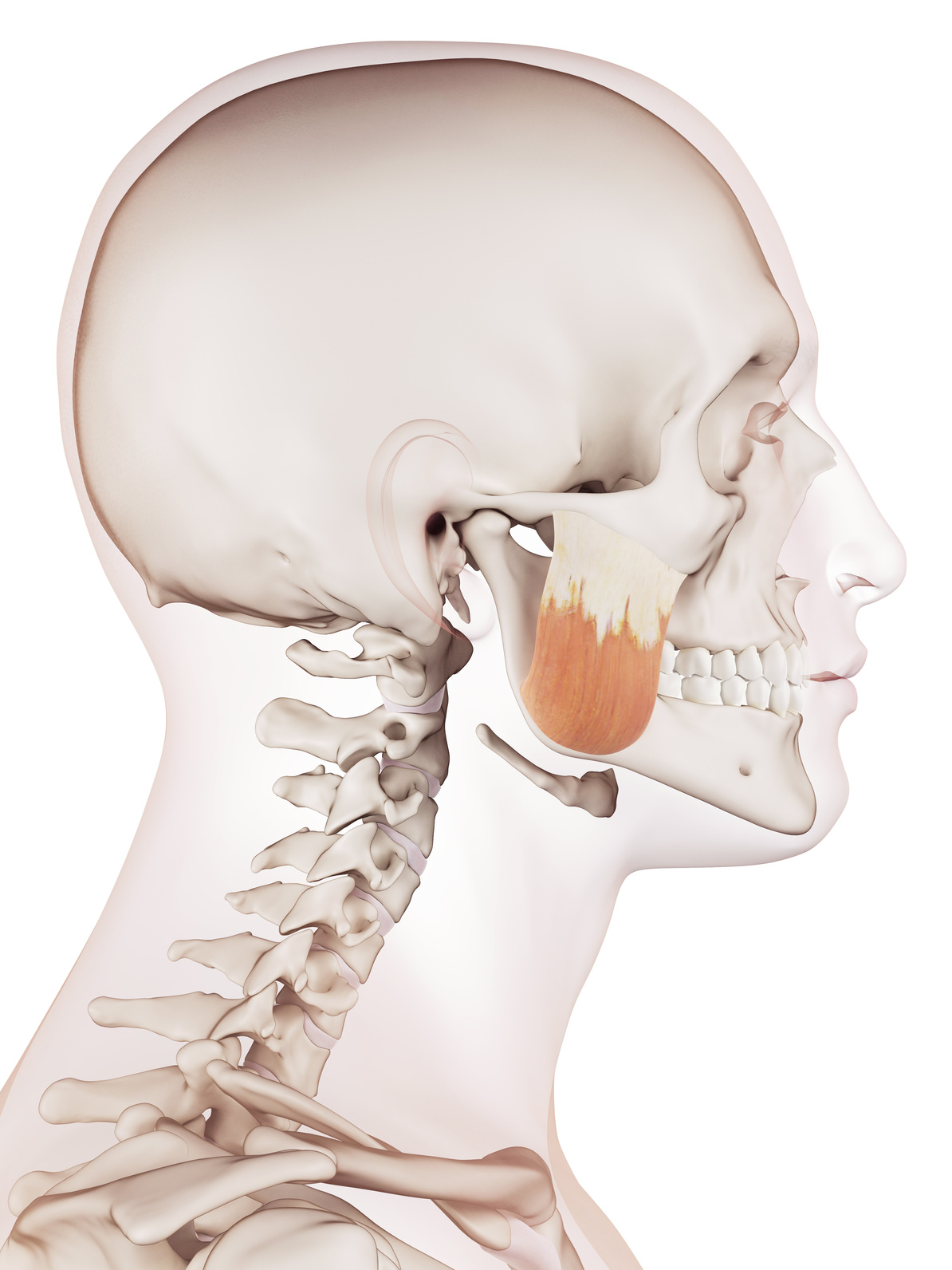Complaints according to the temporomandibular joint
Complaints in the temporomandibular joint (TMJ) can be very different, ranging from pain directly above the joint to pain in the jaw muscles to cracking or rubbing sounds from the joint.


Symptoms
The most common symptoms of temporomandibular joint complaints are as follow:
- Pain in the region of the temporomandibular joint
- Malocclusion (cracking / rubbing)
- Restricted mouth opening
- Temporomandibular joint dislocation
- Unclear bite of the teeth/malocclusion
- Pressing or crunching at night
The cause of TMJ problems can also be very different.
Diseases
Common diseases include the following:
- Discus luxation
- Temporomandibular joint dislocation
- Masticatory muscle hypertrophy
- Arthrosis
- Arthritis
- Malformations in the area of the temporomandibular joint
The cause can be roughly divided into myogenic (starting from the masticatory muscles) and arthrogenic (starting from the joint) causes, though mixed forms often exist.
Often the myogenic complains can be caused by an overload (e.g., crunching in a stressful situation leading to pain in the adjacent masticatory muscles). These pains often manifest themselves in radiating discomfort up to the mandible or the temporomandibular region, and there are usually indurations in these muscle groups.
In the case of arthrogenic causes, a so-called anterior discus luxation is common; then the articular disc is displaced forward in the jaw joint. In the beginning, affected persons complain of a cracking sound during opening and closing; this cracking may then disappear in the event of a permanent luxation in the joint disc. A cracking or clicking sound is harmless, but if pain or movement restrictions are added, further clarification and, if necessary, therapy should be carried out.
Therapy
In principle, in the case of discomfort of the temporomandibular joint, soft food should be eaten and chewing gum should be avoided.
Basically, attempts are made to be as conservative as possible, without major operations if possible. In the foreground, in the case of more aching pain and painful pressure points / hardening in the area of the chewing muscles, as far as possible, stress reduction, especially physiotherapy, is also indicated. It is important to perform certain exercises at home regularly, if necessary in combination with a splint, which should be worn overnight for several months.
Joint rinsing (arthrozentesis / lavage)
In the temporomandibular joint, the upper joint gap is punctured with 2 needles and rinsed with liquid under pressure to remove tissue residues and inflammatory mediators.
Temporomandibular joint arthroscopy
In the case of arthroscopy of the TMJ, a small instrument with a camera is used in full anesthesia. A camera is inserted into the upper joint gap, the joint gap is rinsed, and smaller adhesions can be solved by means of small instruments.
Open jaw joint surgery
If the methods mentioned so far do not lead to a clear improvement (for example, severe arthrotic changes), the joint can be visualized via an approach directly in front of the ear in full anesthesia. Within the scope of this surgery, the body own tissue can be used to replace the disc.




